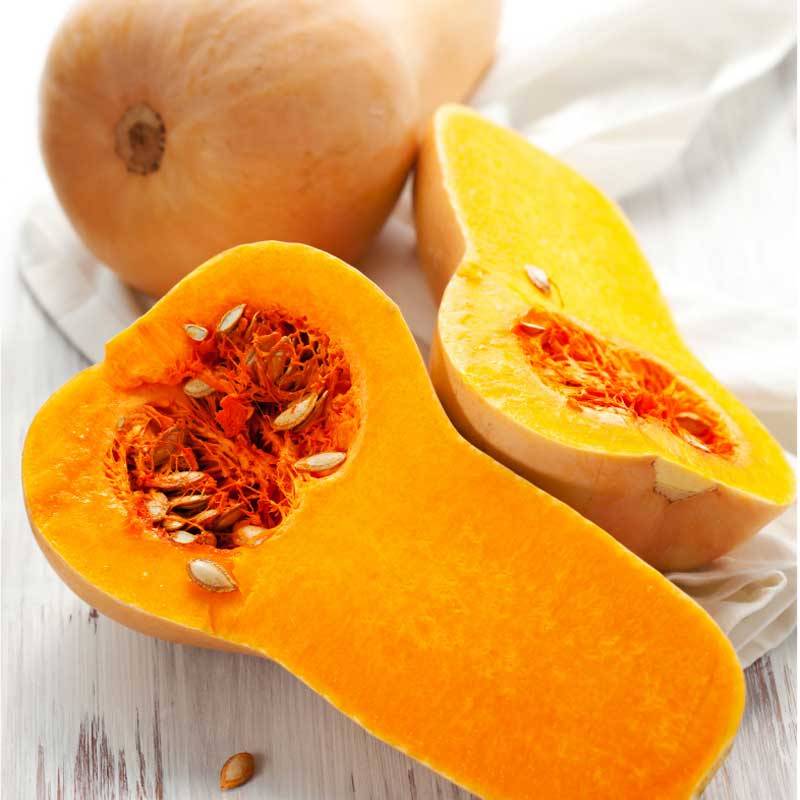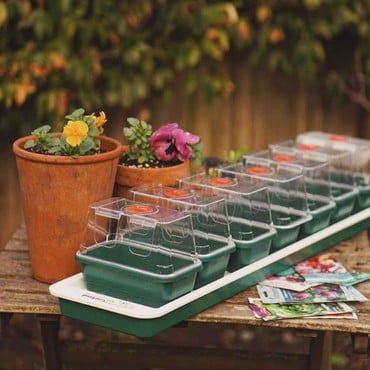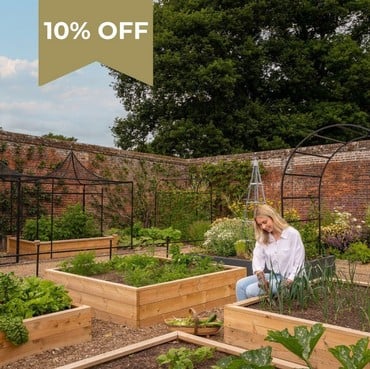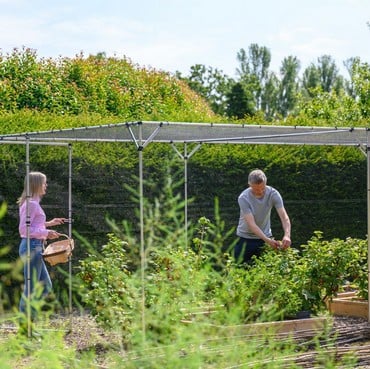Butternut squash is one of the most popular squashes to grow in your home garden. The pear-shaped fruits are widely celebrated for their sweet, nutty flavours and incredible versatility. Whether it's risotto, curry, pie or soup, this bulbous squash is a great addition to an abundance of dishes. Aside from its tasty qualities, butternut squash is a great veggie for health reasons too, being low in carbohydrates and bursting with vitamins.
Did you know? Butternut squash is loaded with vitamin A, in fact one serving provides more than you need for the whole day!
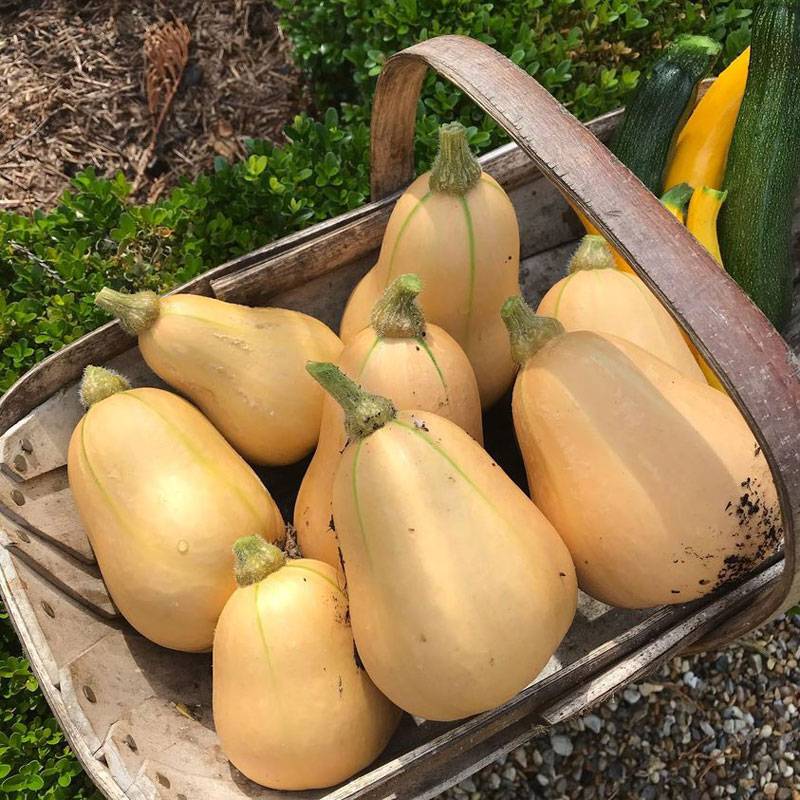
The growing process
Pick your varieties
With an abundance of tasty recipe options, butternut squash is an obvious grow your own option for any gardener. The only tricky element is deciding which delightful variety to grow. To help make things easier, we’ve listed our top picks below:
Butterscotch
A compact variety, butterscotch can be grown in borders, beds, or patio pots. With an exceptionally sweet taste, they are delicious baked, roasted or even in a risotto.
Barbara Butternut
This popular winter butternut squash has green striped skin and a delicious rich, orange flesh. Its rounder shape yields more flesh than other varieties.
Harrier
An outstanding early British-bred butternut squash ideally suited to UK growing conditions. Its sweet tasting flesh and small seed cavity make it perfect for roasting and soups.
Butterbush
If you love the flavour of butternut squash, but feel you do not have the space to grow them, then this is the variety for you. Perfectly suited to smaller areas, butterbush is widely regarded as the best tasting winter squash.
Growing
Typically, squashes are sown indoors to get them off to an early start. Sow seeds in pots of compost from April. Transplant seedlings into larger pots when big enough to handle, then plant outside when all risk of frost has passed.
Butternut squash care advice
- Keep your butternut squash plants weed free and feed through the growing season as they are hungry plants.
- Feed your butternut squash every 10-14 days with a liquid fertiliser, once the first fruits start to swell.
- Remove any leaves covering the young squashes so they ripen more fully.
Harvesting
The best way to tell if a squash is ready to be picked is by their appearance. They are ready to harvest when the skin is hard and uniform in colour. Allow the squash to mature on the plant and remove before the first frost. Remember to leave a 1-inch stem on each squash to prevent inviting bacteria through the soft spot where the stem once was.
After picking, the butternut squash will need time to cure. Simply leave the squash to sit at room temperature for a week or two to fully harden the skin. Store butternut squash in the fridge and they will keep up to 6 months. Alternatively, they’ll keep for up to 3 months when stored at room temperature.
Tip: Save your seeds, dry them out and use them for future growing!
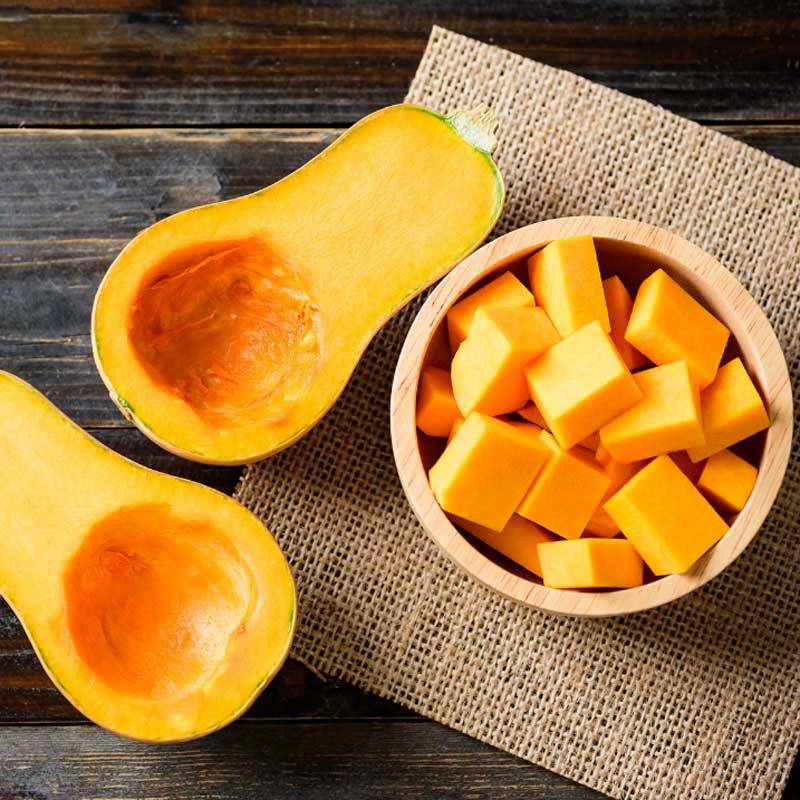
Other uses for your surplus harvest of butternut squash
Make the most of your butternut squash with these comforting recipe suggestions. This versatile veggie can be added to a whole host of dishes, but it works just as well on its own too.
Squashetti
A delicious alternative to traditional spaghetti. Simply poke holes all over a butternut squash with a fork. Microwave for 10-20 minutes depending on size and allow to cool. Cut in half and remove all seeds. With a fork, pull apart the squash so that is resembles spaghetti. Once ready, cook the squashetti in some hot oil and serve in place of pasta.
Butternut squash soup
The perfect winter warmer that can be made in large batches and frozen for weekday lunches and dinners. In a large pot, cook 1 diced onion and minced garlic until softened. Add in cubed butternut squash and vegetable broth. Bring to a boil and simmer for 15-20 minutes. Pour entire contents into a large blender and carefully blend until smooth. Serve with a swirl of crème fraiche and thyme.
Fragrant butternut curry
Up your veg intake with this delicious, fragrant vegetarian curry. Heat oil in a large frying pan and cook butternut squash until browned. Add onion and curry paste and fry for a few minutes. Pour over vegetable stock, cover and simmer for a further 20 minutes. Add some roughly chopped tomatoes and a tin of chickpeas and gently cook for 4 minutes. Take off the heat and stir through Greek yoghurt and coriander. Serve piping with rice of your choosing.
Stuffed butternut
Butternut squash tastes its best when stuffed with an abundance of delicious ingredients and roasted. Simply slice your squash in half and remove the seeds. Rub generously with oil and seasoning and roast in the oven for approx. 40 minutes. Get creative and prepare your filling. Our favourite combination is fried shallots, garlic, rice, lemon zest, pine nuts and feta. Scoop out some cooked flesh from the squash and stuff with your prepared filling. Bake for a further 10 minutes and then tuck in.


















